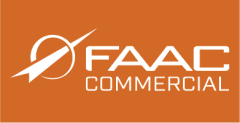Using Public Transport Simulation Training to Address post-COVID Transit Operator Shortage
Published

Even before COVID, there was a nationwide shortage of mass transit operators. More than a year of disruption has only made it worse.
While we’re hopefully rounding the bend on COVID, experts now largely agree that herd immunity is not in the immediate future. This is our moment to re-assess how we get things done and make those processes more robust. Public transport simulation training offers an opportunity to fill empty seats behind the wheel today and build a better system for maintaining a robust pipeline of operators in the future.
COVID Made Our Nationwide Shortages of Mass Transit Operators Worse
Several Maine districts have had to cancel school because they don’t have enough drivers to get students to reopened classrooms. According to Maine Department of Education spokesperson Kelli Deveaux, “School districts across Maine have been using bonuses, offered paid training programs and even worked with other employment and training organizations to try and entice people to join our bus driver workforce.”
Nonetheless, their staffing issues persist—and Maine is far from alone. Communities in Massachusetts, Pennsylvania, and Wisconsin are having similar issues. In Ohio, some areas are only able to muster around two-thirds of the drivers they need. In a recent nationwide survey, 78% of respondents reported a bus driver shortage in their area. Around 81% believed it had gotten worse under COVID.
In mass transit, the story has been the same: Paul Davis is the general manager and chief executive officer of West Virginia’s Tri-State Transit Authority. They have openings for transit operators that are getting no applicants at all.
“We have tried everything we can think of to get people to apply but have had little success. Bus drivers here basically make around $25 an hour, and we still can’t get qualified people to apply”—despite the fact that this starting wage is 50% to 70% above that of a school bus driver.
COVID and Mass Transit
Part of the issue is that mass transit has attracted an older workforce, especially in recent years. These workers are more susceptible to COVID and more likely to be hospitalized with it.
Nationwide, the average transit operator is 52 years old. It isn’t uncommon for up to half of the bus drivers to be 60+ or otherwise immune-compromised in many areas. As a result, many took early retirement rather than risk their health.
And for those with large vehicle experience, COVID drove demand for their skills in less-risky sectors with less arduous training as Sandy Lake (director of the Georgia Center of Innovation for Logistics) told the Atlanta Journal-Constitution in April, “Anybody who can deliver a package is in demand. … Driver pay is going up.”
Addressing Shortfalls through Public Transport Simulation Training
Public transport simulation training systems can make transit training more engaging, less arduous and increase training throughout without exposing class participants to the risk of COVID and other infectious diseases.
The Massachusetts Bay Transportation Authority (MBTA) is the fifth-largest transit authority in the U.S. They’ve relied on public transport simulation training since 2006. It’s proven especially useful in quickly onboarding trainees. MBTA’s bus driving training program now begins with a compressed three-day basic “Vehicle Operations” unit that uses a combination of standard and custom simulation scenarios to teach both generically good driving habits while preparing operators to navigate some MBTA-specific challenges. By day three, operators who’ve never driven any commercial vehicle are ready to operate a vehicle on Boston streets safely.
They’ve also found success using their simulator’s built-in “Instructor Viewer Mode” to increase COVID-safety without compromising training quality. With these technologies and tools—included as standard with their sim—they can run smaller group sessions. These aren’t only safer in terms of exposure to COVID or other infectious diseases; they also allow everyone to be more fully engaged in the training.

